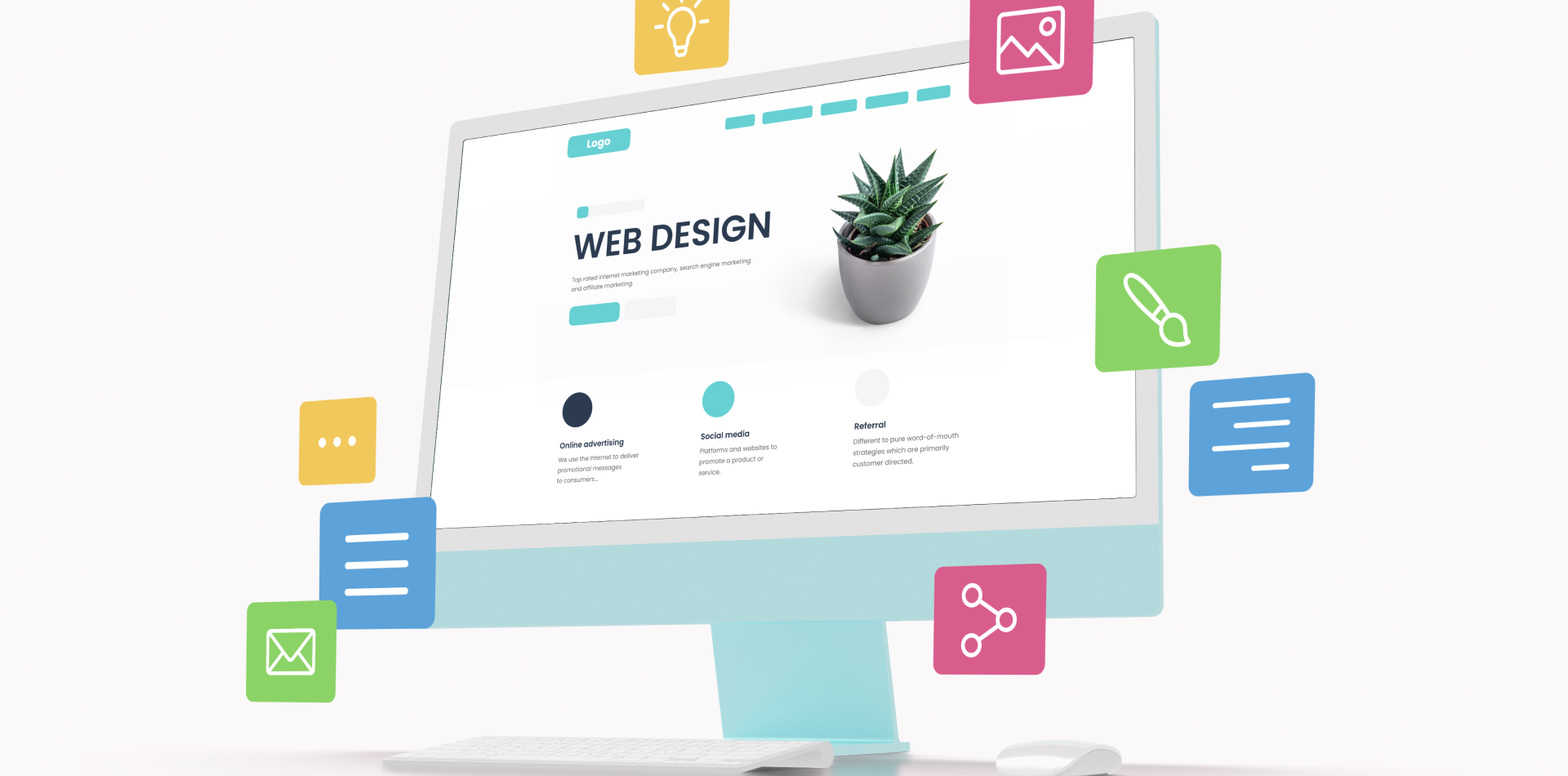Why Mobile Navigation is Crucial for UX
With mobile devices accounting for over 60% of global internet traffic, designing intuitive and efficient mobile navigation is more critical than ever. A well-structured mobile navigation system ensures seamless browsing, easy accessibility, and higher conversions, while a poorly designed one can lead to frustration, high bounce rates, and lost revenue.
Users expect a fast, effortless, and predictable navigation experience on mobile, where screen space is limited, and interactions rely on touch gestures. If they can’t find what they need quickly, they’ll leave.
This guide explores the dos and don’ts of mobile navigation, providing best practices to create smooth, intuitive, and high-performing mobile experiences that keep users engaged.

✅ Dos: Best Practices for Mobile Navigation
🔹 1. Keep Navigation Simple & Intuitive
Simplicity is key. A cluttered or confusing menu makes navigation difficult and frustrates users. The fewer clicks it takes to reach a destination, the better.
🟢 Limit the number of main menu items (4-7 is ideal for clarity).
🟢 Use clear, concise, and familiar labels (avoid jargon).
🟢 Ensure a consistent menu structure across all pages.
🟢 Place essential pages like Home, Categories, Search, and Account in primary navigation.
🔍 Example:
Amazon keeps its mobile menu simple, using icon-based bottom navigation for frequently accessed features like Home, Cart, and Profile.
🔹 2. Optimize for One-Handed Use
Most users browse with one hand, and research shows that 75% of interactions happen in the lower half of the screen.
🟢 Position key navigation within thumb reach (bottom navigation bars work best).
🟢 Keep primary actions (search, cart, back, and menu) easily accessible.
🟢 Ensure CTA buttons are large enough (48px+) for easy tapping.
🔍 Example:
Instagram’s bottom navigation bar ensures easy access to the Home, Search, Reels, and Profile tabs using just the thumb.
🔹 3. Use a Mobile-Friendly Menu Structure
Menus should be easy to access, quick to open, and simple to navigate.
🟢 Hamburger menus work well for less frequently used options.
🟢 Bottom navigation bars are ideal for apps requiring frequent tab switching.
🟢 Consider sticky navigation to keep key elements always visible.
🟢 Use collapsible menus to save space while maintaining accessibility.
🔍 Example:
Google Maps uses a minimal top navigation bar for search and settings, while other options are hidden in an easy-to-access menu.
🔹 4. Prioritize Search & Quick Access Features
A visible search bar is essential for helping users find content fast without scrolling through menus.
🟢 Place the search bar at the top of the screen for easy access.
🟢 Implement auto-suggestions to speed up the search process.
🟢 Allow users to apply filters & categories to refine results.
🔍 Example:
E-commerce sites like eBay and Walmart use a fixed search bar on mobile to encourage quick product searches.
🔹 5. Use Recognizable Icons with Labels
Icons alone can be ambiguous, so pairing them with text labels ensures clarity.
🟢 Use universal icons (🔍 for Search, 🛒 for Cart, 📩 for Messages).
🟢 Add text labels to avoid confusion (e.g., “Menu” next to a hamburger icon).
🟢 Ensure icons are distinct and easy to tap.
🔍 Example:
Spotify combines universal icons with labels in its bottom navigation for clarity.
🔹 6. Ensure Smooth Performance & Fast Loading
Navigation should feel instant and responsive to prevent user frustration.
🟢 Optimize images and reduce excessive animations.
🟢 Use lazy loading to load content only when needed.
🟢 Keep animations subtle and under 300ms to feel natural.
🔍 Example:
Google Search loads navigation elements in milliseconds to enhance the mobile experience.
🔹 7. Make Navigation Accessible
Navigation should be usable for everyone, including people with disabilities.
🟢 Ensure high color contrast for readability.
🟢 Use ARIA labels to help screen readers interpret menus.
🟢 Enable keyboard & voice navigation for inclusivity.
🔍 Example:
Apple’s iOS settings include voice commands and gesture-based navigation for accessibility.
❌ Don’ts: Common Mobile Navigation Mistakes
🔻 1. Don’t Overload the Menu with Too Many Items
Menus packed with too many options overwhelm users.
🔴 Avoid deep nested menus requiring excessive tapping.
🔴 Keep only essential links in the main menu.
🔍 Bad Example:
A news website with 20+ categories in the main menu makes navigation exhausting.
🔻 2. Don’t Hide Important Features in a Hamburger Menu
Hamburger menus reduce discoverability for frequently used features.
🔴 Place high-priority actions in a visible bottom navigation bar.
🔴 Show essential options upfront rather than hiding them.
🔍 Bad Example:
Facebook moved Messenger to a separate app instead of keeping it in the primary navigation, causing user confusion.
🔻 3. Don’t Use Small Tap Targets
Tiny buttons lead to misclicks and frustration.
🔴 Ensure buttons are at least 48px for easy tapping.
🔴 Space out elements to prevent accidental clicks.
🔍 Bad Example:
A checkout button that’s too close to the “Cancel” button can cause accidental purchase cancellations.
🔻 4. Don’t Use Hidden Gestures Without Indicators
Swipe gestures are useful but should be optional and clearly indicated.
🔴 Avoid gestures that lack visible prompts.
🔴 Ensure swipe-based navigation doesn’t interfere with scrolling.
🔍 Bad Example:
Snapchat’s UI relies heavily on hidden swipe gestures, making it difficult for new users to navigate.
🔥 Key Takeaways: How to Create Intuitive Mobile Navigation
📍 Keep navigation simple, clear, and intuitive.
📍 Place essential actions within thumb reach.
📍 Use universal icons with labels for clarity.
📍 Ensure menus load fast and interactions feel smooth.
📍 Test usability frequently and refine based on user feedback.
A well-designed mobile navigation system enhances usability, engagement, and conversions, ensuring users enjoy a seamless and intuitive experience.
💬 What’s Your Biggest Mobile Navigation Challenge?
Have you faced any mobile navigation issues in your projects? Drop your thoughts in the comments below!




5 Comments
Michael Carter
20 March 2025🚀 Mobile navigation is everything! If users struggle to find their way, they’ll leave instantly. Great insights!
Sarah Thompson
20 March 2025🔥 I totally agree with keeping navigation simple. Too many options in a menu just confuse users!
James Reynolds
20 March 2025Bottom navigation bars are a game-changer for apps. So much easier than hidden menus!
Emily Foster
20 March 2025Search functionality is underrated. A clear, fast search bar can save so much frustration!
Daniel Brooks
20 March 2025Unlabeled icons can be a nightmare! I always pair mine with text to make them user-friendly.